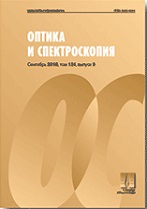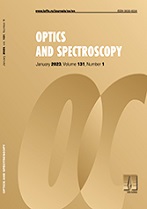| Optics and Spectroscopy |
|
|


|
|
|
This article is cited in 1 scientific paper (total in 1 paper) Nanophotonics International Conference ''PCNSPA 2018 -- Photonic Colloidal Nanostructures: Synthesis, Properties, and Applications'', Saint Petersburg, Russia, June 4--8, 2018 Advanced nanotools for imaging of solid tumors and circulating and disseminated cancer cells A. Sukhanovaab, F. Ramos-Gomesc, F. Alvescd, P. Chamesef, D. Batyef, I. Nabievab a Laboratory of Nano-Bioengineering, National Research Nuclear University MEPhI (Moscow Engineering Physics Institute), 115409 Moscow, Russia b Laboratoire de Recherche en Nanosciences, LRN-EA4682, Université de Reims Champagne–Ardenne, 51100 Reims, France c Translational Molecular Imaging Unit, Max Planck Institute for Experimental Medicine, 37075 Göttingen, Germany d Clinic of Haematology and Medical Oncology, University Medical Center Göttingen, Georg-August-Universität, 37075 Göttingen, Germany e Aix-Marseille Université, 13009 Marseille, France f Centre de Recherche en Cancérologie de Marseille, 13009 Marseille, France
This publication is cited in the following 1 articles:
|


|
||||||||||||||||||||||||||||||||||||||||||||||||||||||||||

|
 Contact us:
Contact us:math-net2025_04@mi-ras.ru |
 Terms of Use Terms of Use
|
 Registration to the website Registration to the website |
 Logotypes Logotypes |
|










 Citation in format
Citation in format 